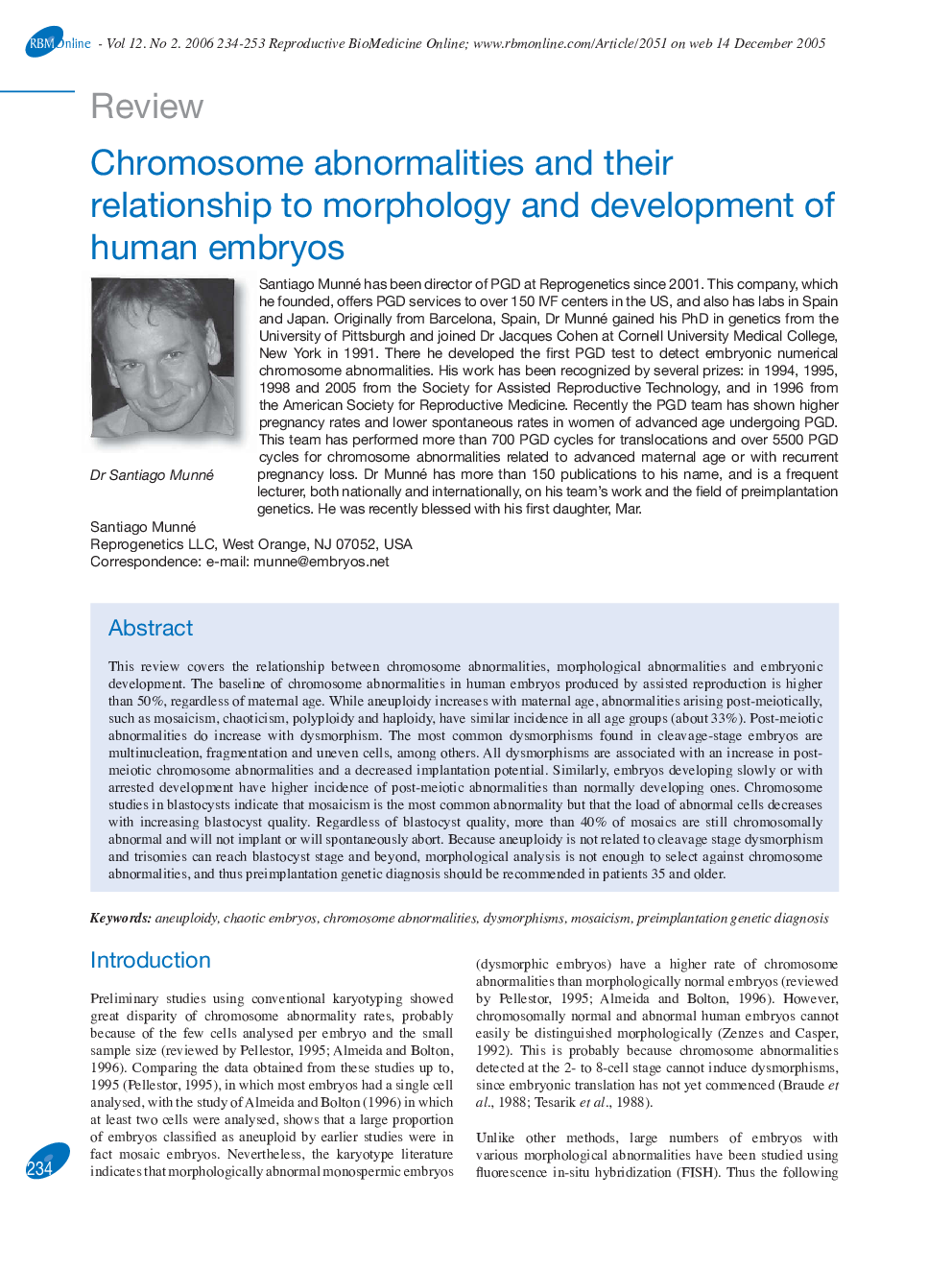| کد مقاله | کد نشریه | سال انتشار | مقاله انگلیسی | نسخه تمام متن |
|---|---|---|---|---|
| 3973655 | 1256868 | 2006 | 20 صفحه PDF | دانلود رایگان |

This review covers the relationship between chromosome abnormalities, morphological abnormalities and embryonic development. The baseline of chromosome abnormalities in human embryos produced by assisted reproduction is higher than 50%, regardless of maternal age. While aneuploidy increases with maternal age, abnormalities arising post-meiotically, such as mosaicism, chaoticism, polyploidy and haploidy, have similar incidence in all age groups (about 33%). Post-meiotic abnormalities do increase with dysmorphism. The most common dysmorphisms found in cleavage-stage embryos are multinucleation, fragmentation and uneven cells, among others. All dysmorphisms are associated with an increase in post-meiotic chromosome abnormalities and a decreased implantation potential. Similarly, embryos developing slowly or with arrested development have higher incidence of post-meiotic abnormalities than normally developing ones. Chromosome studies in blastocysts indicate that mosaicism is the most common abnormality but that the load of abnormal cells decreases with increasing blastocyst quality. Regardless of blastocyst quality, more than 40% of mosaics are still chromosomally abnormal and will not implant or will spontaneously abort. Because aneuploidy is not related to cleavage stage dysmorphism and trisomies can reach blastocyst stage and beyond, morphological analysis is not enough to select against chromosome abnormalities, and thus preimplantation genetic diagnosis should be recommended in patients 35 and older.
Journal: Reproductive BioMedicine Online - Volume 12, Issue 2, 2006, Pages 234-253